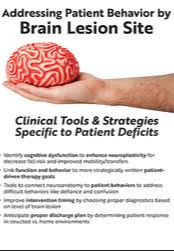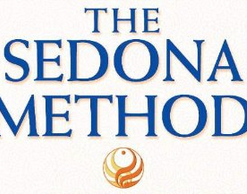Jerome Quellier – Addressing Patient Behavior by Brain Lesion Site
$219.00 Original price was: $219.00.$61.75Current price is: $61.75.
By deducing the patient’s experience, the clinician can also prepare for behavioral barriers to engagement and understand the healing process with greater compassion.
Jerome Quellier – Addressing Patient Behavior by Brain Lesion Site
NEUROANATOMY AND THE IMPACT ON COGNITIVE PROCESSING (CASE STUDY ICON)
- Basic neuronal anatomy
- Brain wiring: Association, projection, and commissural fiber tracts
- Brain lobes locations and ties to cognitive processes
- Cerebellum and impact upon cognition
- Case Study 1: Jacob’s anxiety and how pacing the halls became therapeutic
OPTIC SYSTEM AND VISUAL PERCEPTION (CASE STUDY ICON)
- Optic constructs, anterior-posterior fiber tracts
- Visual cortices and unique roles in visual processing
- Effect of tumors, shear injuries, CVA lesions upon visual perception
- Case study 1: Why can’t my patient just see the whole worksheet like I do?
- Group Exercise: Review of vision diagnostics by discipline (PT/OT/SLP)
HOW NEUROTRANSMITTERS DRIVE THE BUS
- Internal communication systems within the brain
- Dopamine pathways and effects on cognition and reward systems
- Serotonin pathways and mood modulations
EXECUTIVE FUNCTIONS OF THE FRONTAL LOBE
- The Cognitive Pyramid and moving patients upward
- Skull anatomy and effects of shear injury
- Shear injury as it affects anxiety and behavioral health
- Therapy implications for PT/OT/SLP
- Group Exercise: Review of executive function diagnostics by discipline (PT/OT/SLP)
COMMUNICATION AND THE LEFT HEMISPHERIC FUNCTIONS
- Broca’s vs. Wernike’s areas
- Function of the arcuate fasciculus upon communication
SPATIAL PROCESSING AND THE RIGHT HEMISPHERIC FUNCTIONS
- Neurophysiology vs neuropathology, understanding patients’ nonverbal challenges
- Inferential language and social cognition
- A sense of time and spatial organization revealed
THE HIDDEN PROCESSORS-THALAMIC INFLUENCES
- Auditory pathways and neuroanatomy
- Thalamic engagement on sensory information
- Modulation of sleep and vigilance
MEMORY: HOW THE HIPPOCAMPUS AND THE AMYGDALA PARTNER (CASE STUDY ICON)
- Memory processes
- Memory types: Right vs Left hippocampal functions
- Hypoxia and anoxia upon memory function
- Sleep and memory consolidation, effect of exercise on memory structures
- Amygdala’s influence upon fear-based learning and hijacking executive control
- Case study 3: Nile’s hypoxia and long tern rehab outcomes
RECOVERY FROM ACCELERATION/DECELERATION INJURIES: DIFFUSE AXONAL INJURY (DAI)
- Microanatomical features of DAI
- CTE: Chronic Traumatic Encephalopathy
- Where medications have failed
AGITATION MANAGEMENT STRATEGIES
- Review how working knowledge of the Rancho Los Amigos levels and Practitioner tips can avoid confrontation
- Learn trick of the trade for avoiding escalation
- Confabulation and denial—addressing the elephant in the room
ENRICHING PATIENT AND CLINICIAN RELATIONSHIPS
- The science behind mediations and mindfulness
- Reigning in the runaway situation
Would you like to receive Jerome Quellier – Addressing Patient Behavior by Brain Lesion Site ?
Description:
Neuroanatomy is admittedly complex and overwhelming. Clinicians working in rehabilitation are faced with growing caseloads, diminished resources/reimbursement, and increasingly medically complex patients with the expectation of improving outcomes and reducing length of stay. Honing one’s knowledge of clinically-relevant neuroanatomy and neuropathology can predict dysfunction and intuitively create a scaffold for assessment and treatment even before meeting the patient. Predetermining potential deficits leads to a more tightly defined diagnostic battery and expedites treatment formulation. By deducing the patient’s experience, the clinician can also prepare for behavioral barriers to engagement and understand the healing process with greater compassion.
In this recording, you will learn intermediate level neurophysiology as it relates to cognitive-linguistic skills and behavioral control, as well as explore mindfulness techniques for stress reduction. The overlying foci of the recording are to arm treating professionals with an improved clinical eye, predicting dysfunction, and expedite the pathway to treatment. Recording content will also include patient focused educational materials for stroke and traumatic brain injury ready to be utilized by treating practitioners.
Here’s What You’ll Get in Jerome Quellier – Addressing Patient Behavior by Brain Lesion Site
Jerome Quellier – Addressing Patient Behavior by Brain Lesion Site : Sample
Be the first to review “Jerome Quellier – Addressing Patient Behavior by Brain Lesion Site” Cancel reply
Related products
Health & Medical
Health & Medical
Health & Medical
Health & Medical














Reviews
There are no reviews yet.